 To enhance service speed and avoid tariff delays, we've opened a US warehouse. All US orders ship directly from our US facility.
To enhance service speed and avoid tariff delays, we've opened a US warehouse. All US orders ship directly from our US facility.
| Cat. No. | Product Name | Field of Application | Chemical Structure |
|---|---|---|---|
| DCC3263 | MCC950 free acid Featured |
Potent and selective inhibitor of NLRP3, reducing interleukin-1β (IL-1β) production in vivo and attenuating the severity of experimental autoimmune encephalomyelitis (EAE)
More description
|

|
| DC11754 | AD 2900 Featured |
AD 2900 (AD2900, AD-2900) is a novel potent, broad S1P receptor antagonist with IC50 of 3.8, 3.2, 6.2, 5.9 and 0.405 uM for S1P1, 2, 3, 4 and 5 respectively.
More description
|

|
| DC5147 | Molibresib (I-BET-762) Featured |
GSK 525762A is a potent small molecule inhibitors that disrupt the function of the BET family of bromodomains (Brd2, Brd3, and Brd4).
More description
|

|
| DC7150 | Birabresib (OTX015) Featured |
OTX-015 is a new potent BRD2/3/4 inhibitor with evident anti-proliferative activity in several cell lines representative of mature B-cell tumors.
More description
|
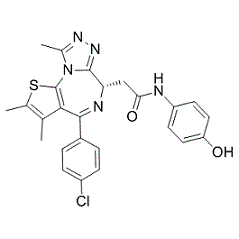
|
| DC12534 | T5910047 Featured |
T5910047 (T-5910047) is a small molecule inhibitor of MyD88-dependent signaling pathways, disrupts MyD88 homodimeric formation; inhibits SEB-induced inhibition of cytokine production in PBMCs with IC50 of 2-10 uM, also inhibits SEA-induced pro-inflammatory cytokine production, shows no toxicity in primary cells up to 100 uM.
More description
|

|
| DC70333 | CXCR6 inhibitor 81 Featured |
CXCR6 inhibitor 81 is a potent (EC50=40 nM) and selective orally bioavailable small molecule antagonist of human CXCR6 receptor;
Compound 81 displays >10-fold improvement in potency in both the β-arrestin and cAMP assays (IC50 =40 and 540 nM, respectively) compared to ML339.
CXCR6 inhibitor 81 inhibits migration of SK-HEP-1 hepatoma cells in a dose dependent manner. Compound 81 has promising oral DMPK data, significantly decreases tumor growth in a 30-day mouse xenograft model of HCC.
More description
|

|
| DC70862 | UC-764865 Featured |
UC-764865 (UC764865) is a small-molecule inhibitor that targeted ubiquitin-conjugating enzyme UBE2N active site.UC-764865 blocks ubiquitination of innate immune- and inflammatory-related substrates in human AML cell lines.Inhibition of UBE2N function disrupted oncogenic immune signaling by promoting cell death of leukemic HSPCs while sparing normal HSPCs in vitro.
More description
|

|
| DC22472 | Naltrexone Featured |
A potent, competitive antagonist for μ, κ, δ, and σ-opioid receptors with Ki of 0.0825 nM, 0.509 nM, and 8.02 nM, for MOR, KOR, and DOR, respectively.
More description
|

|
| DC49271 | BIM-26226 Featured |
BIM-26226, gastrin-releasing peptide, is a potent and selective antagonist of bombesin receptor. BIM-26226 inhibits BN- or GRP-stimulated amylase release with IC50s in the nanomolar range. BIM-26226 can be used for the research of cancer.
More description
|
.gif)
|
| DC22812 | CEP-11981 |
CEP-11981 is a potent, multi-targeted, orally active, pan-VEGFR, TIE-2 and FGFR1 inhibitor with IC50 of 3-100 nM.
More description
|

|
| DC25095 | BCX4430 freebase |
A viral RNA-dependent RNA polymerase (RdRp) inhibitor that acts as a non-obligate RNA chain terminator.
More description
|
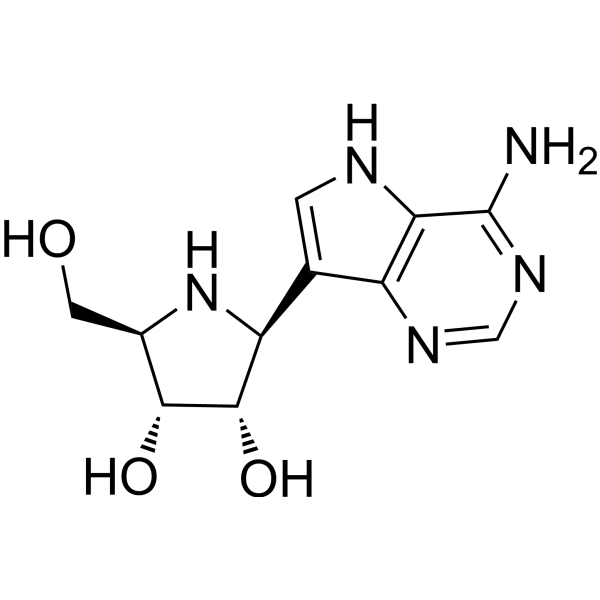
|
| DC9624 | Sparteine sulfate pentahydrate Featured |
(-)-Sparteine sulfate pentahydrate is a class 1a antiarrhythmic agent and a sodium channel blocker.
More description
|
.png)
|
| DC28998 | Heparin sodium salt (MW 15kDa) Featured |
Heparin sodium salt (MW 15kDa) (Sodium heparin (MW 15kDa)) is a polymer of Heparin with the molecular weight of 15kDa. Heparin sodium salt is an anticoagulant which binds reversibly to antithrombin III (ATIII) and greatly accelerates the rate at which ATIII inactivates coagulation enzymes thrombin factor IIa and factor Xa.
More description
|
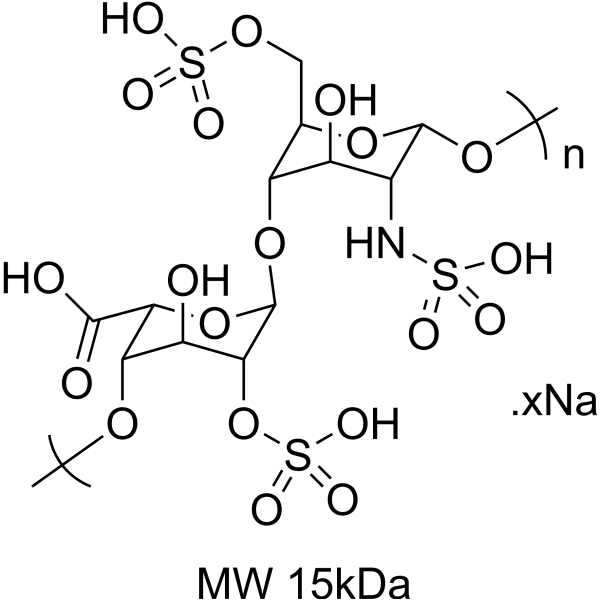
|
| DC22287 | Atractylenolide I Featured |
Atractylenolide I is a sesquiterpene derived from the rhizome of Atractylodes macrocephala, possesses diverse bioactivities, such as neuroprotective, anti-allergic, anti-inflammatory and anticancer properties. Atractylenolide I reduces protein levels of phosphorylated JAK2 and STAT3 in A375 cells, and acts as a TLR4-antagonizing agent.
More description
|

|
| DC7703 | AEBSF-hydrochloride Featured |
AEBSF HCl is a broad spectrum, irreversible serine protease inhibitor.
More description
|

|
| DC33565 | L-p-Bromotetramisole oxalate Featured |
L-p-Bromotetramisole is a cell-permeable inhibitor of all four human AP isoenzymes (Kis =18 and 56 μM for PLAP and NSAP, respectively).
More description
|

|
| DC38000 | Leupeptin Featured |
Leupeptin is a protease inhibitor, will strongly inhibit Trypsin, Papain, Plasmin, Thrombokinase, Kallikrein and Cathepsin B. The half-maximal inhibitory concentration ranges from 0.5 to 75 μg/ml, depending on the enzyme and the substrate. Leupeptin does not inhibit Chymotrypsin, Elastase, Renin, or Pepsin.
More description
|

|
| DCC1779 | Did Perchlorate Featured |
Lipophilic fluorescent reagent, labeling membranes and other hydrophobic structures
More description
|

|
| DC34180 | Calcein Featured |
Calcein is a fluorescent dye that is useful for testing cell viability and for short-term labeling of cells.
More description
|
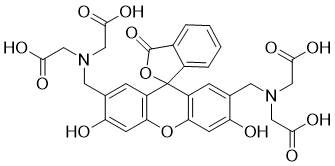
|
| DC32165 | Indocyanine Green Featured |
Indocyanine Green, also known as Cardio-Green and Fox, is a tricarbocyanine dye that is used diagnostically in liver function tests and to determine blood volume and cardiac output.
More description
|

|
| DCC1203 | Calcein-am Featured |
Cell permeable derivative of calcein, becoming fluorescent on hydrolysis
More description
|
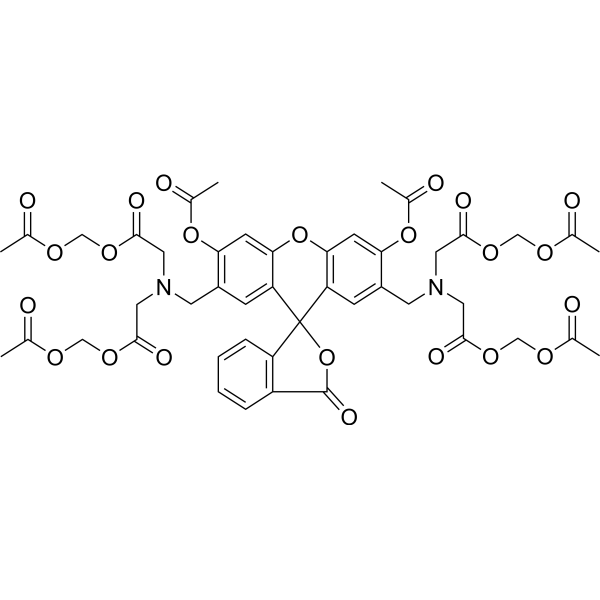
|
| DC11486 | D-Luciferin (potassium salt) Featured |
D-Luciferin is a chemiluminescent substrate of firefly luciferase.
More description
|

|
| DC9387 | E-64 Featured |
E-64 is a natural, potent, and irreversible inhibitor of cysteine proteases; IC50 values for inhibiting cathepsins K, S, and L, in vitro, are 1.4, 4.1, and 2.5 nM, respectively.
More description
|
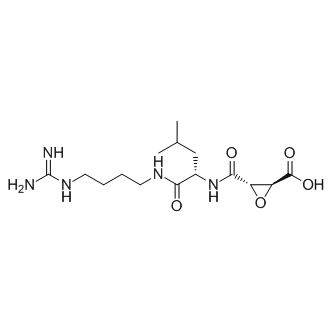
|
| DC31255 | Nemorubicin Featured |
Nemorubicin, also known as PNU152243A, is a doxorubicin derivative that differs significantly from its parent drug in terms of spectrum of antitumor activity, metabolism and toxicity profile. The drug is active on tumors resistant to alkylating agents, topoisomerase II inhibitors and platinum derivatives. It works primarily through topoisomerase I inhibition. Of note, Nemorubicin is active in cells with upregulation of the nucleotide excision repair (NER) pathway, where current therapies fail. Nemorubicin is biotransformed in the liver into cytotoxic metabolites that may further contribute to render this drug highly active against primary liver tumors or liver metastases.
More description
|

|
| DC28270 | Topiramate D12 Featured |
Topiramate D12 (McN 4853 D12) is a deuterium labeled Topiramate. Topiramate is a broad-spectrum antiepileptic agent. Topiramate is a GluR5 receptor antagonist. Topiramate produces its antiepileptic effects through enhancement of GABAergic activity, inhibition of kainate/AMPA receptors, inhibition of voltage-sensitive sodium and calcium channels, increases in potassium conductance, and inhibition of carbonic anhydrase.
More description
|
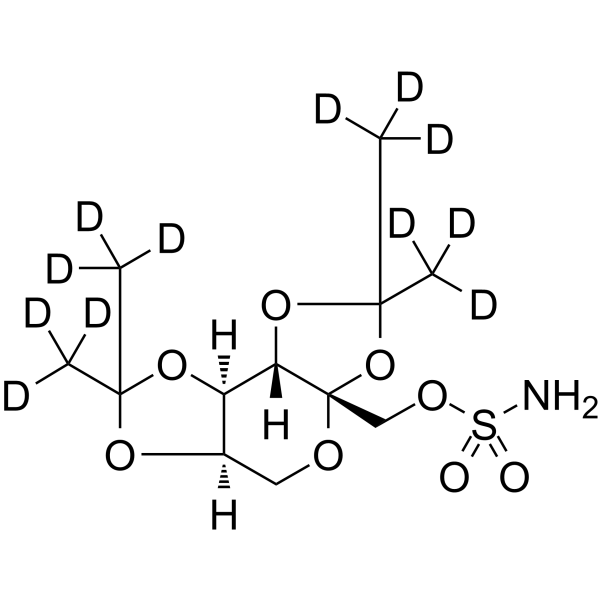
|
| DC70102 | ITK inhibitor Featured |
ITK inhibitor (CAS 439574-61-5 ) is a Interleukin-2-inducible T-cell kinase (Itk) inhibitor..
More description
|

|
| DC11199 | CZh226 Featured |
CZh226 hydrochloride (CZh-226) is a potent, selective inhibitor of p21-activated kinase 4 (PAK4) with Ki of 9 nM, displays 346-fold selectivity over PAK-1.
More description
|

|
| DC70861 | UC-764864 Featured |
UC-764864 (UC764864) is a small-molecule inhibitor that targeted ubiquitin-conjugating enzyme UBE2N active site.UC-764864 blocks ubiquitination of innate immune- and inflammatory-related substrates in human AML cell lines.Inhibition of UBE2N function disrupted oncogenic immune signaling by promoting cell death of leukemic HSPCs while sparing normal HSPCs in vitro.
More description
|

|
| DC42965 | Lobeline hydrochloride Featured |
VMAT2 ligand, stimulating dopamine release, inhibiting the reuptake of dopamine and serotonin, acting as a mixed agonist-antagonist at nicotinic acetylcholine receptors and antagonist at µ-opioid receptors
More description
|

|
| DC31487 | YTR830 Featured |
Tazobactam inhibits the action of bacterial β-lactamases, especially those belonging to the SHV-1 and TEM groups. It is commonly used as its sodium salt, tazobactam sodium. Tazobactam is combined with the extended spectrum β-lactam antibiotic piperacillin in the drug piperacillin/tazobactam, one of the preferred antibiotic treatments for nosocomial pneumonia caused by Pseudomonas aeruginosa.[medical citation needed] Tazobactam broadens the spectrum of piperacillin by making it effective against organisms that express β-lactamase and would normally degrade piperacillin. Tazobactam is derived from the penicillin nucleus and is a penicillinic acid sulfone.
More description
|

|